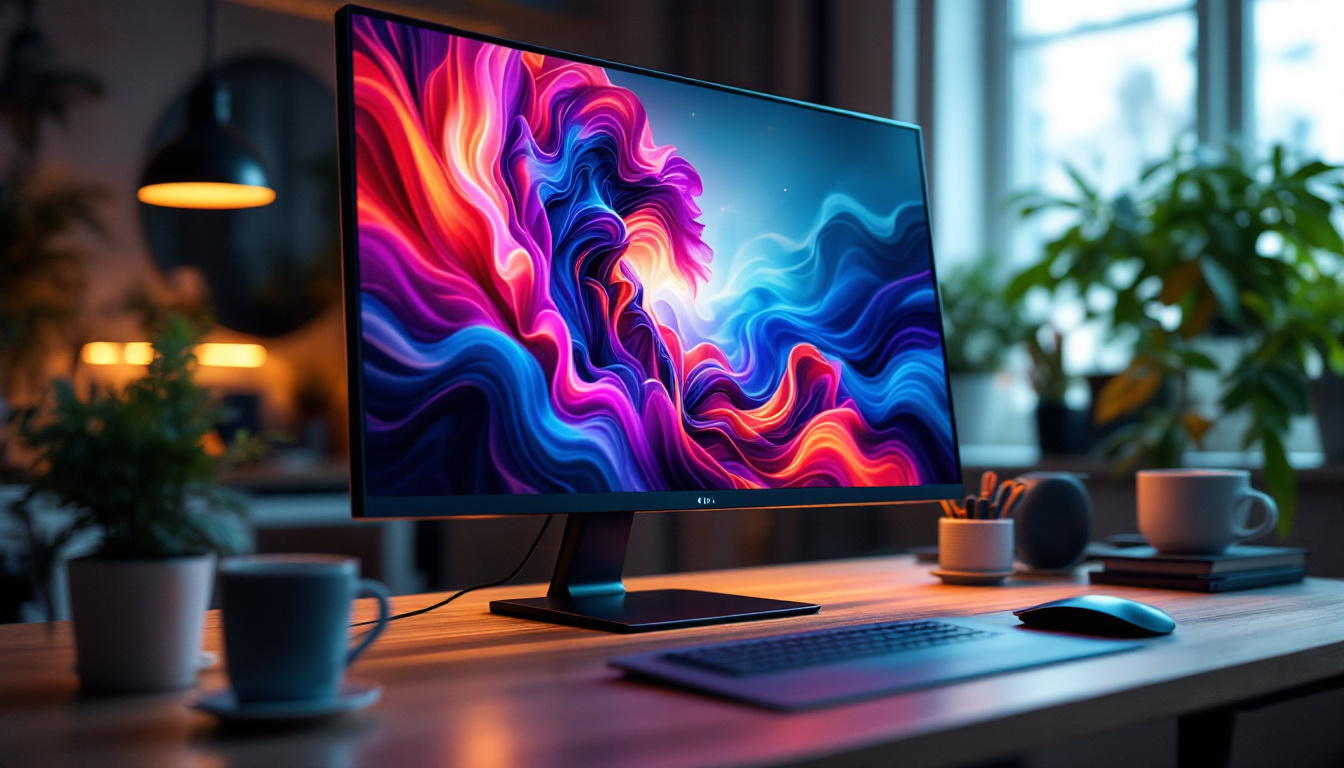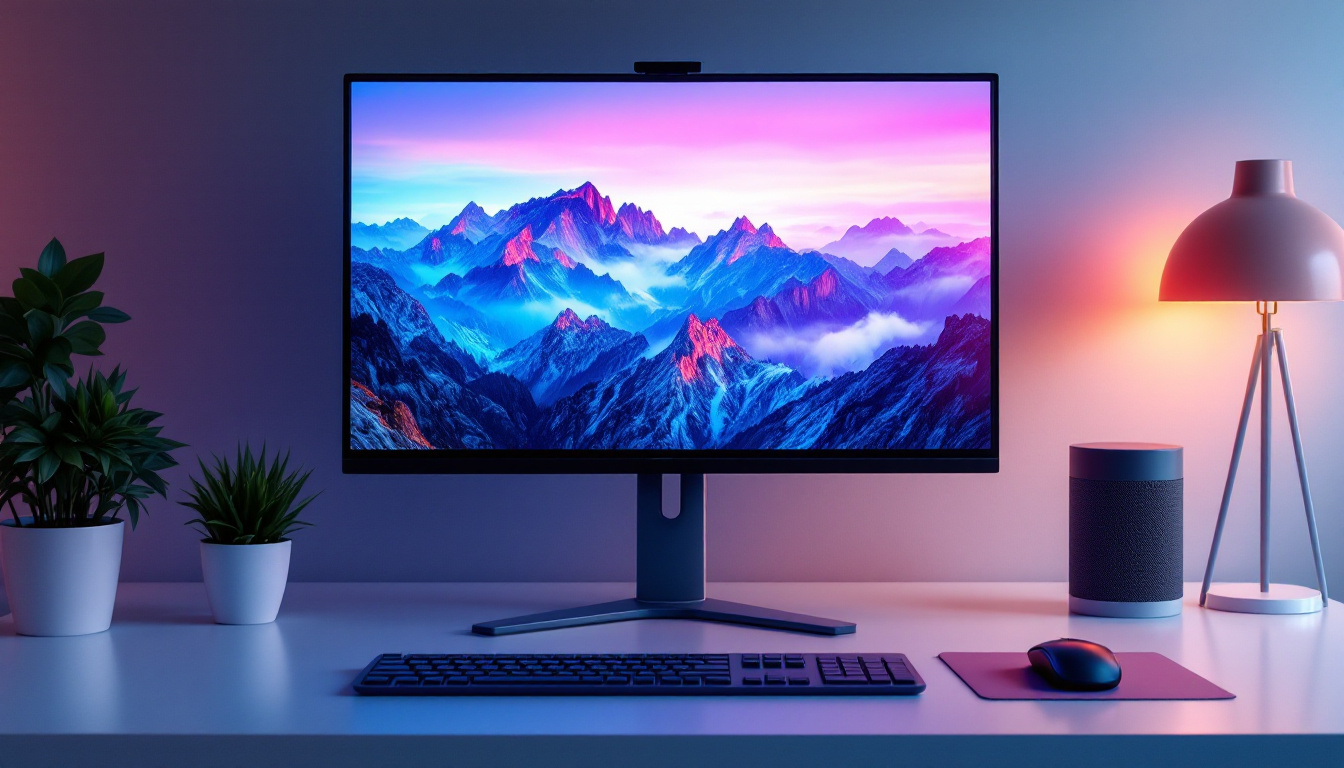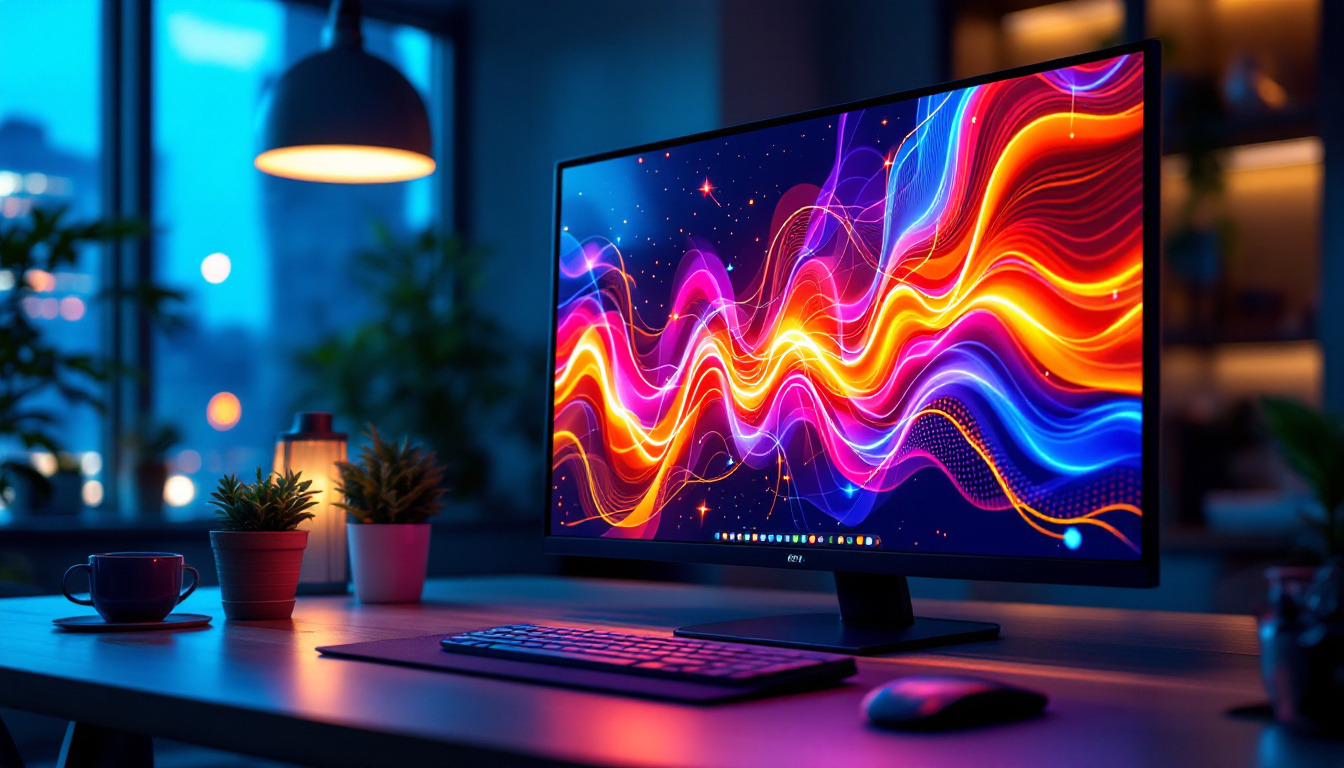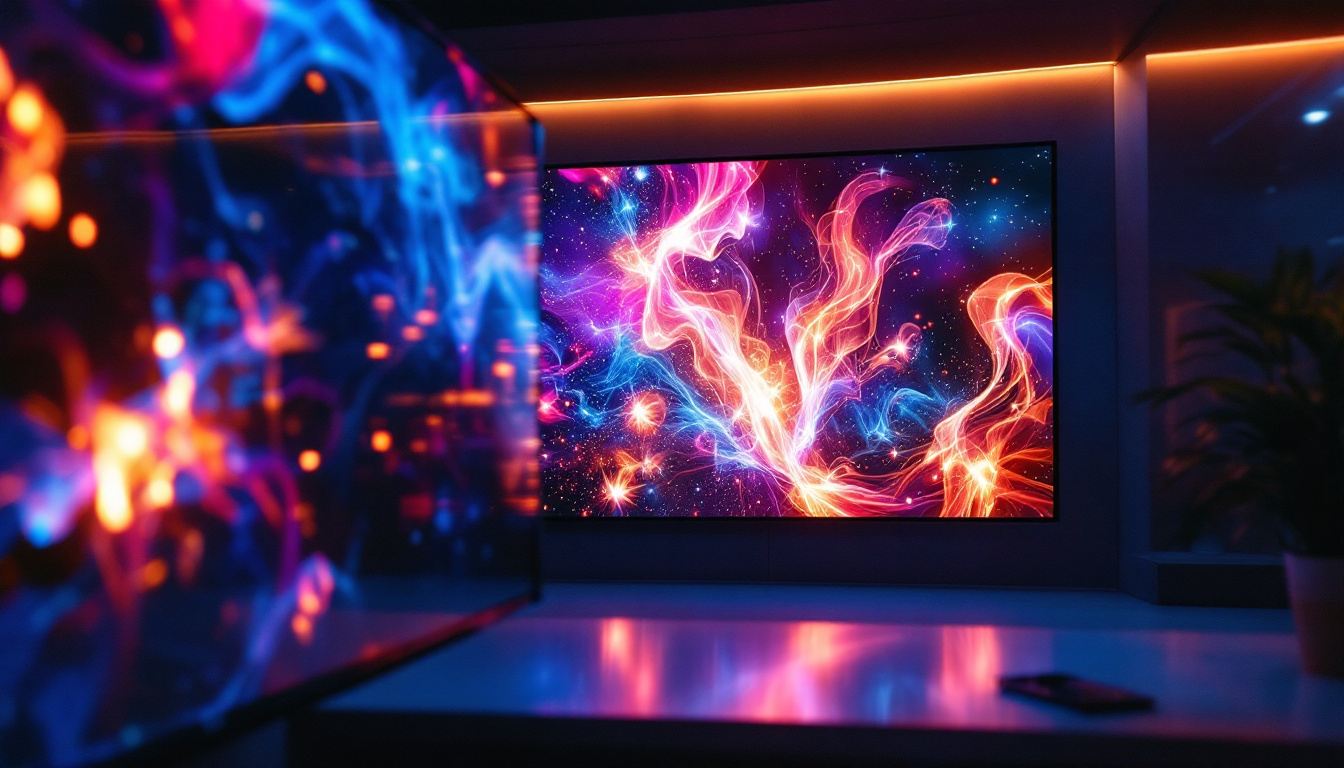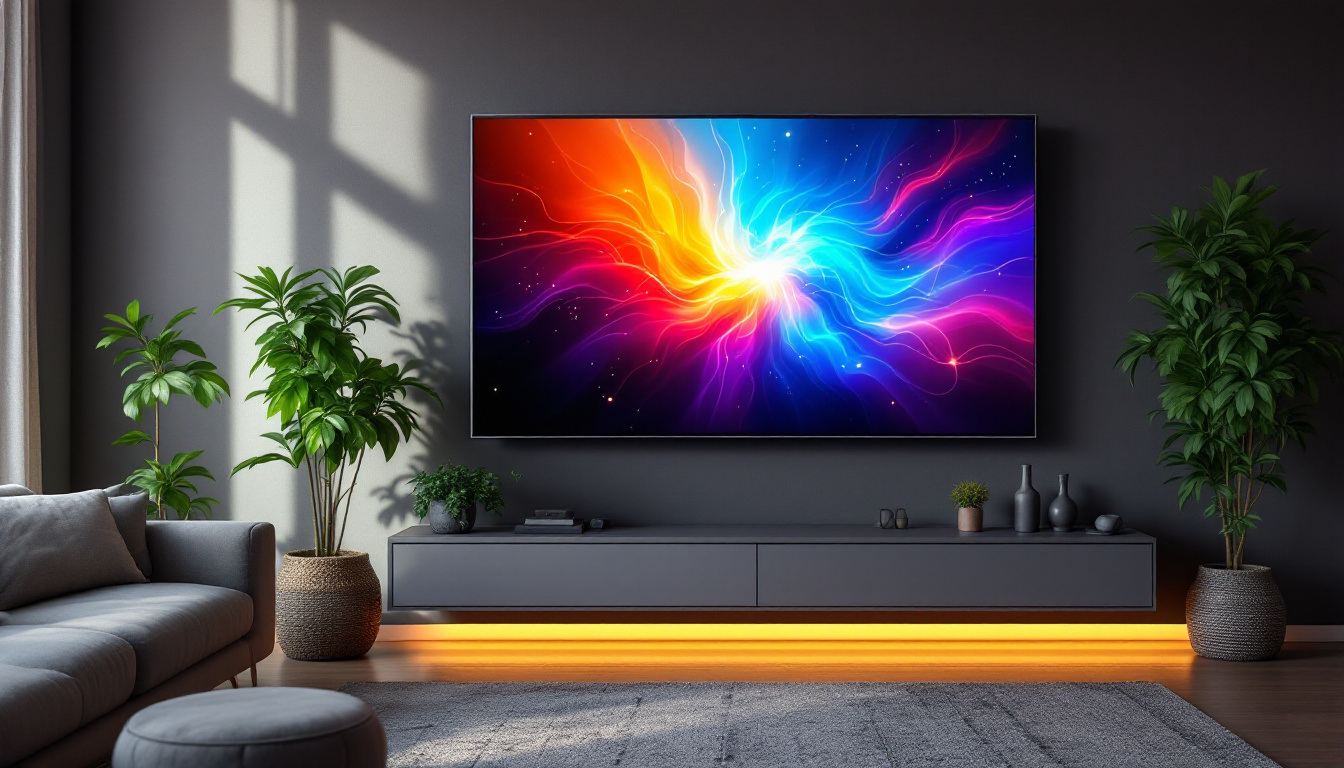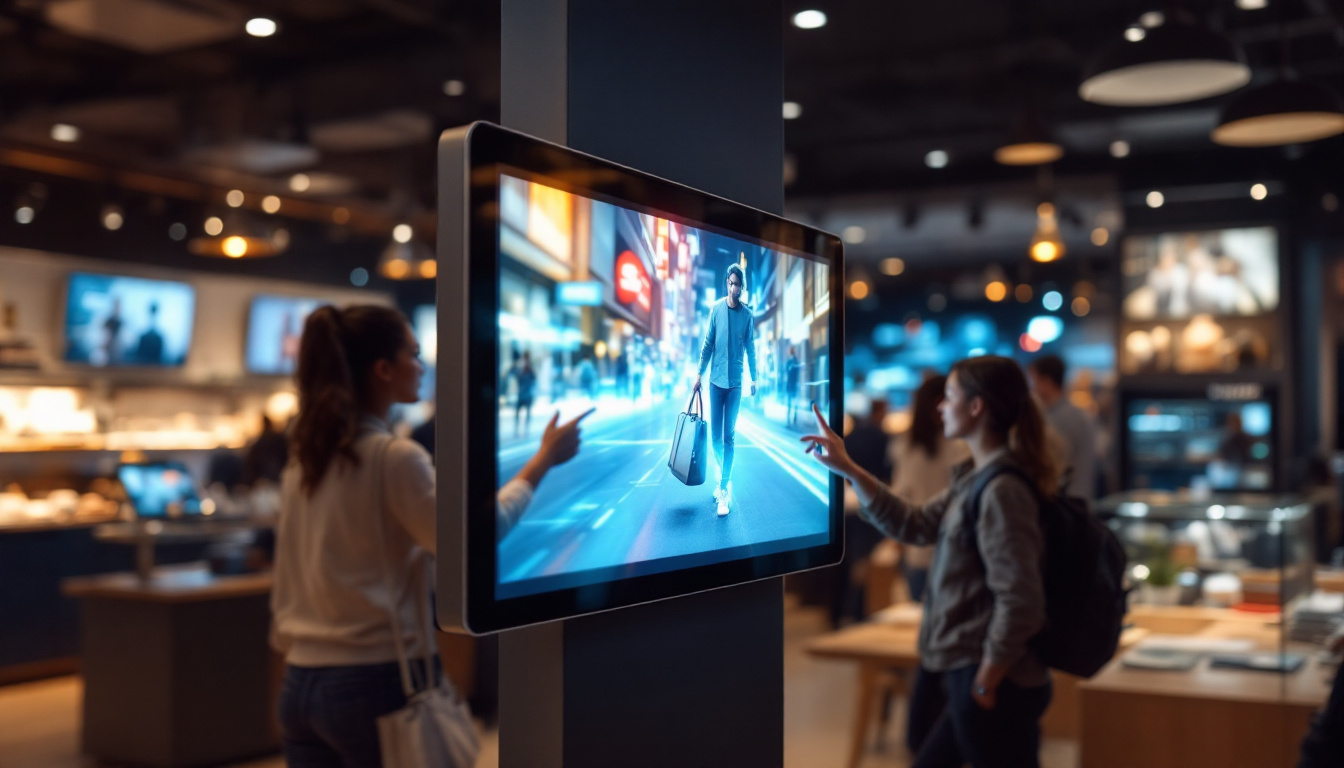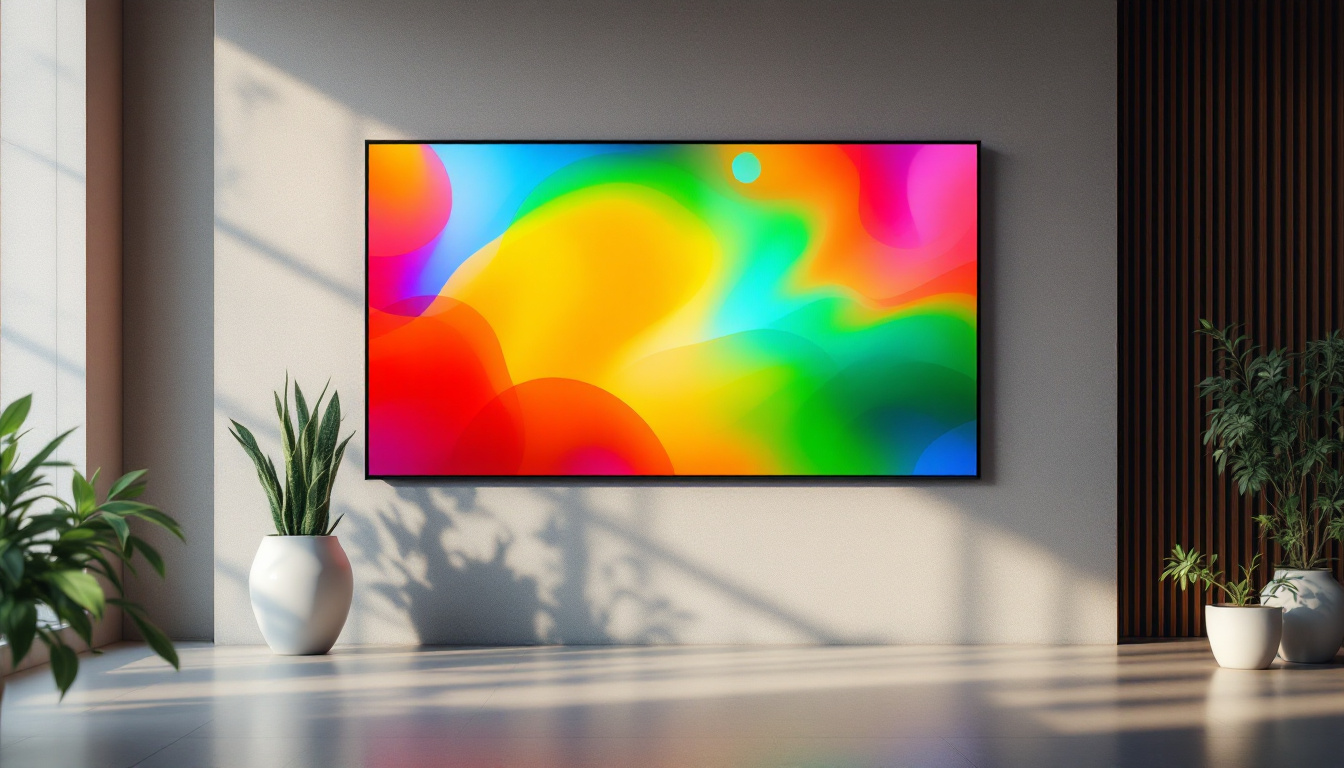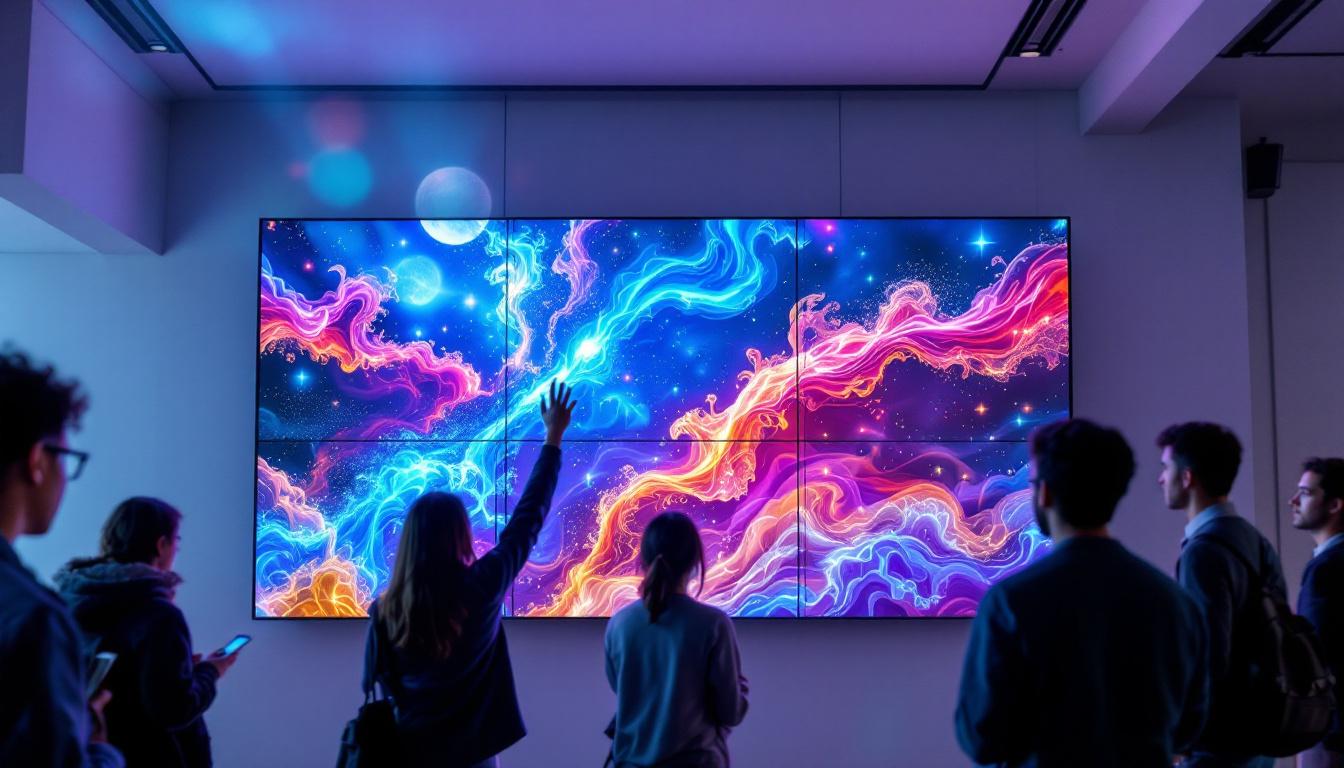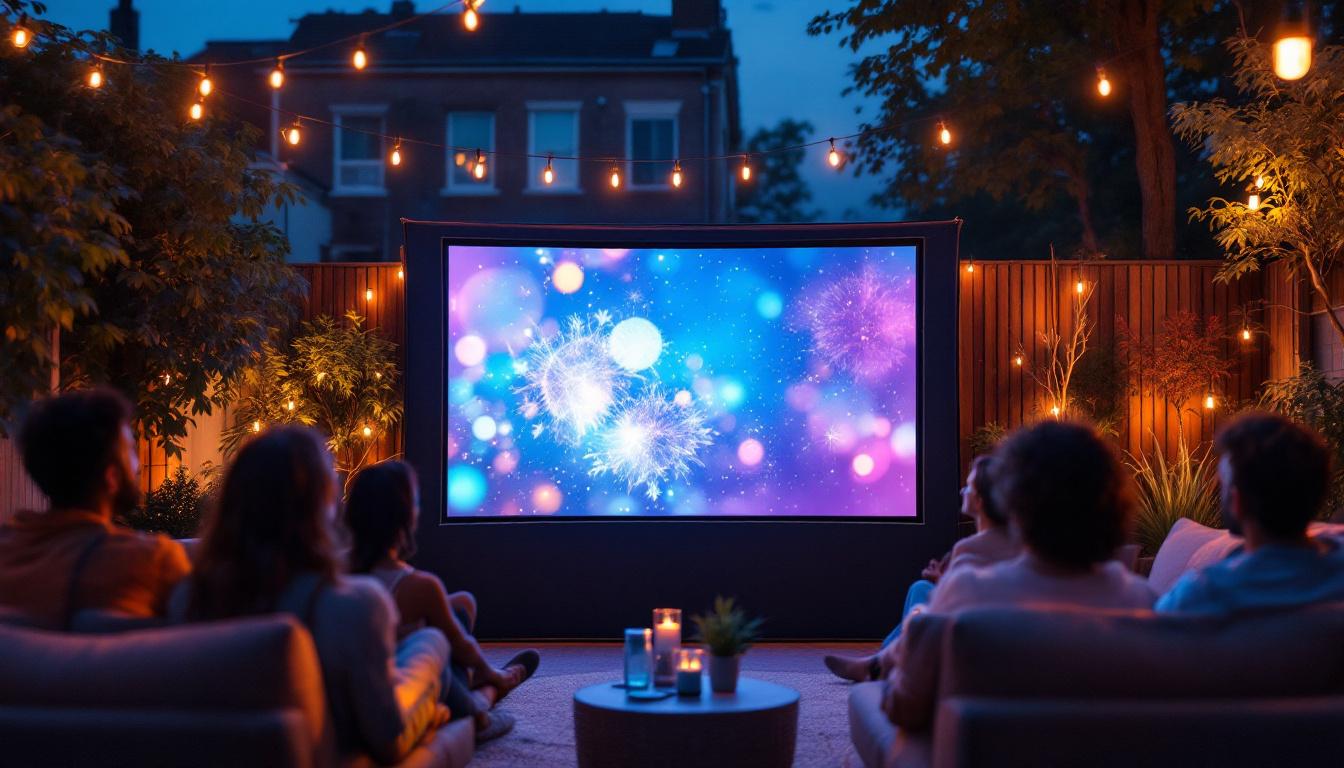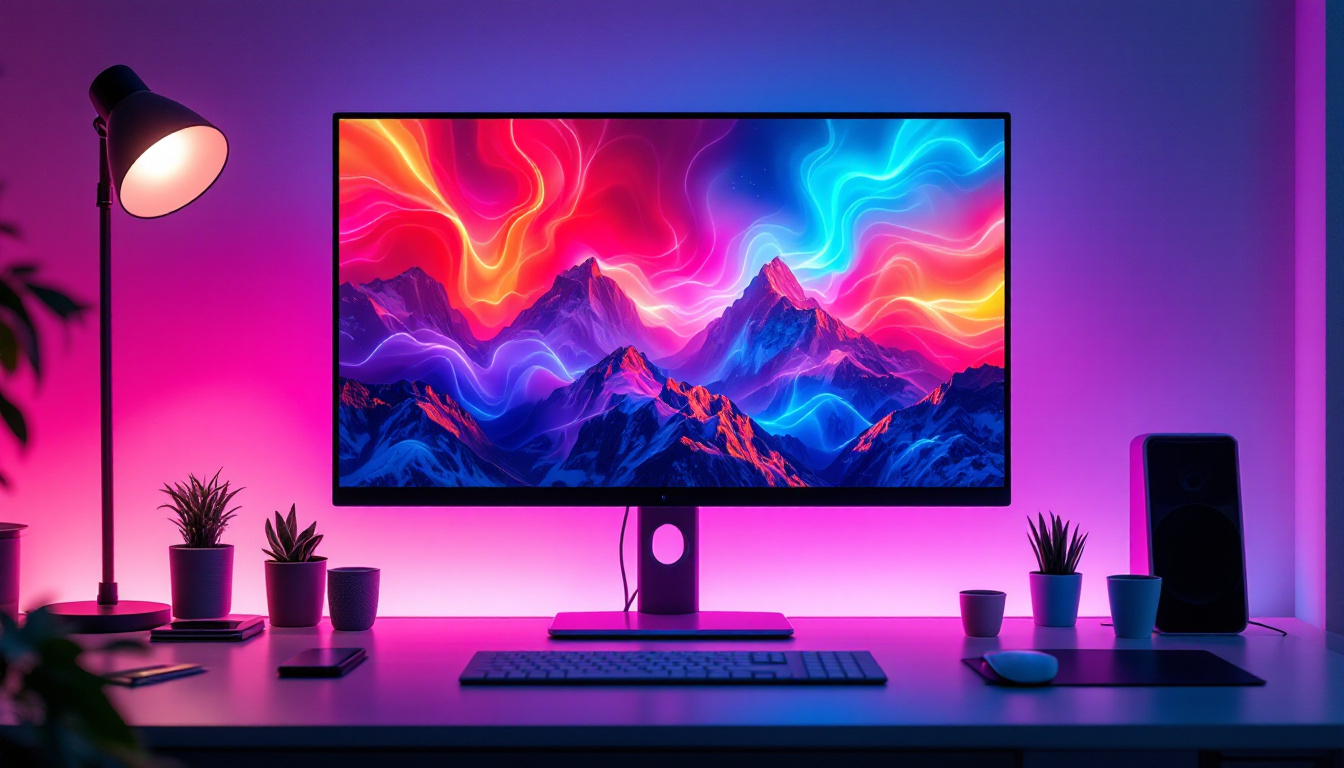Introduction to Monitors with Built-in Cameras
In the age of remote work and virtual communication, the demand for computer monitors with built-in cameras has surged. These innovative devices combine high-quality display technology with integrated video capabilities, making them a convenient choice for professionals and casual users alike. This article explores the features, benefits, and considerations of LED monitors equipped with built-in cameras.
The Rise of Remote Communication
The shift towards remote work has transformed how people communicate and collaborate. Video conferencing has become a staple in both corporate environments and personal interactions. As a result, the need for reliable and efficient tools has never been greater. Monitors with built-in cameras are designed to meet this demand, providing users with an all-in-one solution for video calls, webinars, and online meetings. The convenience of having a camera integrated into the monitor eliminates the clutter of additional devices and simplifies the setup process, allowing users to focus on their tasks rather than on technical configurations. Furthermore, many of these monitors come equipped with advanced features such as noise-canceling microphones and adjustable camera angles, enhancing the overall quality of virtual interactions.
Understanding LED Display Technology
LED (Light Emitting Diode) technology is widely recognized for its vibrant colors and energy efficiency. Unlike traditional LCD monitors, which use fluorescent backlighting, LED displays utilize tiny diodes to produce light. This results in deeper blacks, brighter whites, and a broader color spectrum. When combined with a built-in camera, these monitors offer an exceptional viewing experience for both work and entertainment. The clarity and sharpness of LED displays make them ideal for video calls, where facial expressions and subtle nuances can significantly impact communication. Additionally, many LED monitors now feature high refresh rates and low response times, making them suitable for gaming and multimedia consumption, further broadening their appeal to a diverse range of users. As technology continues to evolve, we can expect even more enhancements in display quality and camera functionality, pushing the boundaries of what these monitors can achieve.
Key Features of Monitors with Built-in Cameras
Monitors with built-in cameras come equipped with a variety of features that enhance usability and functionality. Understanding these features can help consumers make informed decisions when selecting the right monitor for their needs.
Camera Quality and Specifications
The quality of the built-in camera is a crucial factor to consider. Most monitors feature HD (720p) or Full HD (1080p) cameras, which provide clear and sharp images during video calls. Some advanced models even offer 4K resolution, ensuring that users appear crisp and professional. Additionally, features such as autofocus and low-light performance can significantly enhance video quality, making them ideal for various lighting conditions.
Audio Capabilities
Integrated microphones and speakers are common in monitors with built-in cameras. These audio components can vary in quality, with some models offering noise-cancellation technology to minimize background sounds. This is particularly beneficial in busy environments, allowing for clearer communication during video calls. Users should consider the audio capabilities of a monitor to ensure they meet their specific requirements.
Design and Ergonomics
The design of a monitor plays a significant role in its usability. Many monitors with built-in cameras feature adjustable stands, allowing users to customize the height and angle for optimal viewing. Additionally, some models come with privacy shutters or covers for the camera, ensuring users can maintain their privacy when the camera is not in use. Aesthetically, these monitors often boast sleek designs that complement modern workspaces.
Benefits of Using a Monitor with a Built-in Camera
Choosing a monitor with a built-in camera offers several advantages that can enhance productivity and convenience. These benefits make such devices appealing to a wide range of users.
Space-Saving Design
One of the most significant advantages of monitors with built-in cameras is their space-saving design. By integrating the camera into the monitor, users can eliminate the need for additional peripherals, such as external webcams. This streamlined setup not only saves desk space but also reduces cable clutter, creating a more organized workspace.
Enhanced Collaboration
Monitors with built-in cameras facilitate seamless collaboration among team members. With high-quality video capabilities, users can engage in face-to-face interactions, fostering better communication and understanding. This is especially important in remote work settings, where non-verbal cues can enhance discussions and decision-making processes.
Cost-Effectiveness
Investing in a monitor with a built-in camera can be a cost-effective solution for individuals and businesses. Rather than purchasing separate monitors, webcams, and audio devices, users can acquire a single device that meets all their needs. This not only saves money but also simplifies the purchasing process.
Considerations When Choosing a Monitor with a Built-in Camera
While the benefits of monitors with built-in cameras are clear, there are several considerations to keep in mind when selecting the right model. Understanding these factors can help users make informed choices that align with their specific needs.
Compatibility and Connectivity
Before purchasing a monitor with a built-in camera, it is essential to ensure compatibility with existing devices. Most monitors connect via HDMI or DisplayPort, while USB ports may be required for camera functionality. Users should verify that their computers or laptops support these connections to avoid any compatibility issues.
Price Range and Budget
Monitors with built-in cameras are available at various price points, depending on features and specifications. While budget-friendly options exist, investing in a higher-quality monitor can yield better performance and longevity. Users should assess their budget and prioritize features that matter most to them, such as camera resolution and audio quality.
Brand Reputation and Reviews
Researching brand reputation and customer reviews can provide valuable insights into the performance and reliability of monitors with built-in cameras. Established brands often have a track record of producing high-quality products, while user reviews can highlight potential issues or advantages that may not be apparent from specifications alone.
Popular Brands and Models
The market for monitors with built-in cameras is diverse, with several brands offering competitive models. Exploring some of the popular options can help users identify the best fit for their needs.
Logitech
Logitech is renowned for its computer peripherals, and its monitors with built-in cameras are no exception. Known for their high-quality audio and video capabilities, Logitech monitors often come equipped with advanced features such as auto-focus and wide-angle lenses, making them ideal for professional use.
HP
HP offers a range of monitors with built-in cameras that cater to different user needs. Their models often feature sleek designs and high-resolution displays, along with reliable audio performance. HP monitors are particularly popular among business users looking for a combination of style and functionality.
ASUS
ASUS is another brand that has made a mark in the monitor market. Their monitors with built-in cameras typically boast impressive display technology, including vibrant colors and fast response times. ASUS models are well-suited for both gaming and professional use, providing versatility for various applications.
How to Set Up and Use a Monitor with a Built-in Camera
Setting up a monitor with a built-in camera is typically straightforward, but users should follow specific steps to ensure optimal performance. Understanding the setup process can enhance the overall experience.
Connecting the Monitor
To begin, users should connect the monitor to their computer using the appropriate cables. This may involve HDMI or DisplayPort connections, depending on the monitor’s specifications. Once connected, the monitor should be recognized by the computer, allowing users to adjust display settings as needed.
Configuring Camera Settings
After connecting the monitor, users may need to configure camera settings within their video conferencing software. This often involves selecting the built-in camera as the default video source. Users should also check audio settings to ensure that the integrated microphone and speakers are functioning correctly.
Testing the Setup
Before joining a video call, it is advisable to test the setup. This can be done by initiating a test call within the video conferencing application to verify that the camera and audio are working as expected. Adjusting lighting and positioning can further enhance video quality during actual calls.
Maintenance and Care for Monitors with Built-in Cameras
Proper maintenance is essential to ensure the longevity and performance of monitors with built-in cameras. Users should adopt specific care practices to keep their devices in optimal condition.
Regular Cleaning
Dust and fingerprints can accumulate on the monitor screen and camera lens, affecting visibility and video quality. Regular cleaning with a microfiber cloth can help maintain clarity. Users should avoid using harsh chemicals that could damage the screen or camera components.
Software Updates
Keeping the monitor’s firmware and associated software up to date is crucial for optimal performance. Manufacturers often release updates that enhance functionality and fix bugs. Users should periodically check for updates to ensure their monitor operates smoothly.
Proper Storage and Handling
When not in use, it is advisable to store the monitor in a safe location to prevent damage. Users should handle the monitor with care, avoiding excessive force when adjusting the stand or moving the device. This can help prevent wear and tear, extending the monitor’s lifespan.
Conclusion
Monitors with built-in cameras represent a significant advancement in computer technology, offering users a convenient and efficient solution for video communication. With features such as high-quality LED displays, integrated audio, and ergonomic designs, these monitors cater to the needs of modern users.
As remote work continues to shape the professional landscape, investing in a monitor with a built-in camera can enhance productivity and collaboration. By considering factors such as compatibility, price, and brand reputation, users can select the ideal monitor to meet their specific requirements.
Ultimately, the integration of advanced technology in monitors with built-in cameras signifies a shift towards more streamlined and effective communication tools. As the demand for remote interaction grows, these devices will undoubtedly play a pivotal role in shaping the future of work and connectivity.
Discover LumenMatrix’s Advanced LED Display Solutions
As you embrace the future of work and connectivity with monitors that feature built-in cameras, consider elevating your visual experience with LumenMatrix. Our commitment to innovation in LED display technology ensures that your virtual communication is not just efficient, but also visually stunning. From Indoor and Outdoor LED Wall Displays to Custom and All-in-One LED Display solutions, LumenMatrix provides an array of options to meet your professional and personal needs. Check out LumenMatrix LED Display Solutions today and transform the way you share your message with the world.


